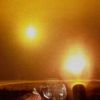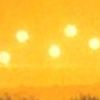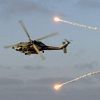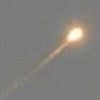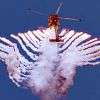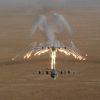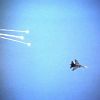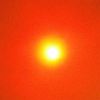Possibly the most underestimated cause of UFO/UAP reports are flares.
Flares are composed of a cylindrical canister, made of metal, cardboard or plastic, with a pyrotechnic mixture of metals inside (mostly magnesium metal in combination with other metals). It is this mixture that, through combustion, produces a brilliant light. Dependent on the chemical composition of the mixture, flares may leave a trail of light or dark coloured smoke behind. The smoke is not always detectable with the naked eye, but when it is, it's a good indication that flares are involved.
Flares can be dropped from airplanes or helicopters, fired from guns (both artillery and pistol-like handguns), or deployed by handheld percussive tubes. They are used to illuminate a terrain or a sea surface (in the case of a military reconnaissance exercise or a search operation for example), or can be fired to signal one's position in a distress situation (especially at sea or in desolate areas). To extend the lifetime of a flare most varieties carry a parachute (either to provide maximum illumination over a large area or, in the case of a signal flare, to increase the chances of being spotted).
Despite the fire hazard and the legally imposed restrictions, parachute flares are increasingly being launched at private parties to impress other people present. Their appearance is that of incandescent ball of white, blue, yellow or orange light. Since they are attached to a parachute, the flares drift with the wind over land or sea, alone or in clusters, generally following a straight path, sometimes swinging back and forth in a falling leaf motion. In other words, their appearance closely resembles the strange and silent lights that are often described by UFO witnesses. It seems likely to us that these pyrotechnic devices can also account for a significant number of sightings that figure in catalogues dealing with earth lights, ball lightning phenomena and so-called "slow" meteors.
Since the 1990s, the successful development of night vision devices has reduced the need for the use of illumination flares during military operations. But at the same time a new variety of flare became popular in military aviation. These flares, which burn at temperatures of thousands of degrees, are discharged individually or in salvoes by pilots or automatically by tail-warning devices. They are deployed as a defensive countermeasure against heat-seeking missiles. Their purpose is to copy the heat emission of the aircraft and lure the missiles away from the aircraft. To be effective their release is often accompanied by a vigorous evasive manoeuvre.
|
F l a r e s
Description
|
||||||||||||||||||||||||||||||||
